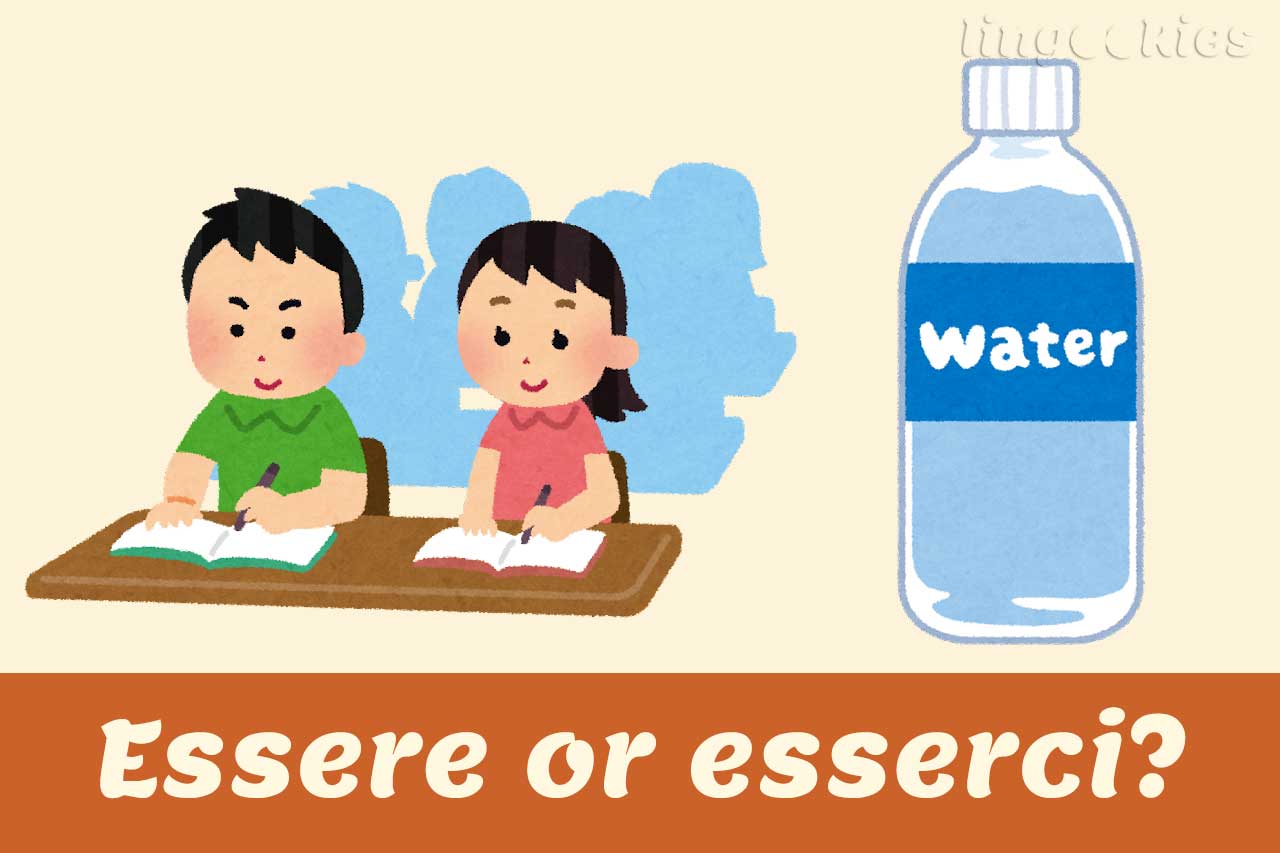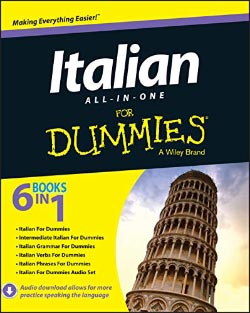What is the difference between essere and esserci in Italian? Are there any situations where you have to use one or the other? Are these verbs even interchangeable?
In this lesson, we will look at how to use these verbs with the help of many audio recordings and example sentences. Read on to learn all you need to know about the difference between essere and esserci!
Let’s get started! Iniziamo!
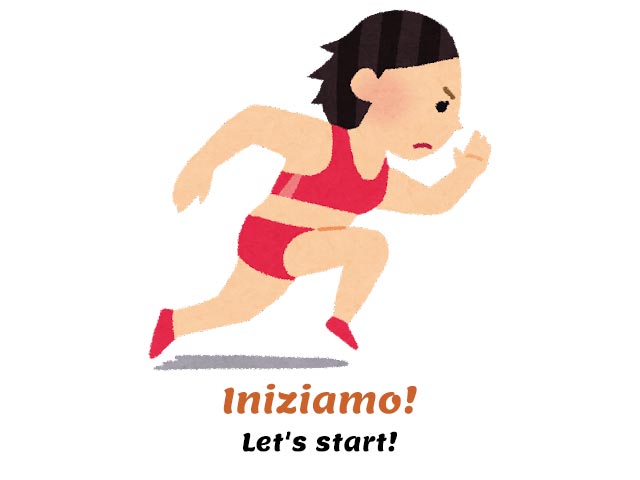
Essere and esserci in Italian
Many students confuse essere with esserci and vice versa. At first glance, these verbs may look like synonyms for “to be”. In reality, however, the difference between essere and esserci in Italian is very clear and these verbs are not interchangeable at all.
Essere simply means “to be”. It’s one of the most common Italian verbs and it’s also a highly irregular verb.
Essere
To be
Gli occhiali sono sul tavolo.
The glasses are on the table.
Esserci, on the other hand, means to be there and is commonly used in the present tense to translate “there is” and “there are” (and also in the imperfect past tense to translate “there was” and “there were”). It can also be conjugated in the future tense (there will be).
Esserci
To be there
C’è un procione in giardino.
There is a raccoon in the garden.
(present)
C’erano alcune foglie sul marciapiede.
There were some leaves on the sidewalk.
(past)
Ci sarà una grande festa domani.
There will be a big party tomorrow.
(future)
Still confused about the difference between essere and esserci in Italian? Let’s take a closer look at each verb.
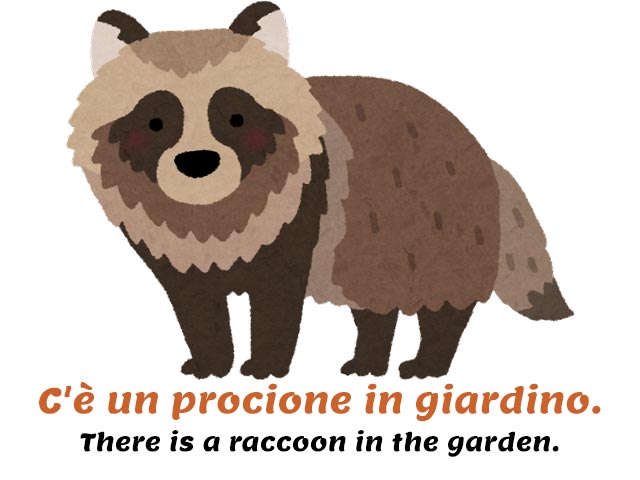
Title: Italian All-in-One For Dummies
Language: English / Italian
Publisher: For Dummies
Pages: 672
Learn to speak Italian like a native? Easy.
Italian All-in-One For Dummies appeals to those readers looking for a comprehensive, all-encompassing guide to mastering the Italian language. It contains content from all For Dummies Italian language instruction titles, including Italian For Dummies, Intermediate Italian For Dummies, Italian Verbs For Dummies, Italian Phrases For Dummies, Italian Grammar For Dummies, and Italian For Dummies Audio Set.
How do you use essere in Italian?
As we said, essere translates as to be. It’s a transitive verb because it can be placed in front of a direct object, but it can also be an intransitive verb because it can also be placed in front of a preposition.
Essere tells you where any object is or was located.
Dov’è la scopa?
Where is the broom?
Le tue chiavi erano qui.
Your keys were here.
Il museo è di fianco alla banca.
The museum is right next to the bank.
Il tuo portafoglio era sul tavolo.
Your wallet is on the table.
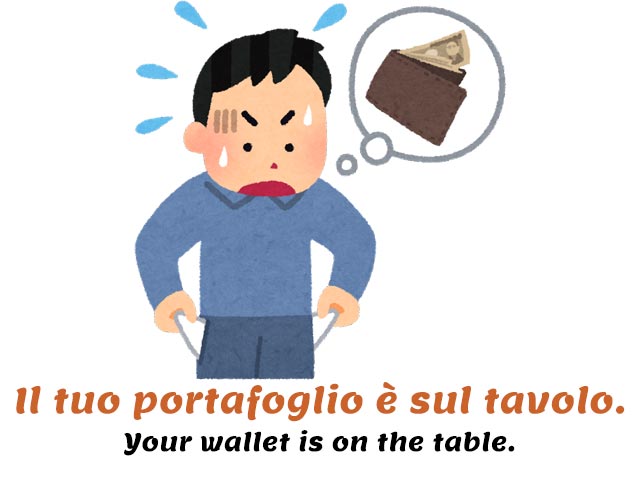
You use c’è / c’era with singular nouns. You use ci sono / c’erano with plural nouns.
Some very common expressions with essere in Italian are…
- essere di fretta, to be in a hurry
- essere a pezzi, to be shattered
- essere pelle e ossa, to be skin and bones
- essere di moda, to be fashionable
- essere in gamba, to be very capable
- essere alla mano, to be down to earth
How do you use esserci in Italian?
Esserci, unlike trovare, is translated as “to be there”.
It doesn’t tell you where an object is, but it does tell you what you can find in a particular place, such as a table or in a drawer. For example, you could say…
Ci sono tre matite sulla scrivania.
There are three pencils on the desk.
Ci sono molte paia di calze nel cassetto.
There are many pairs of socks in the drawer.
Non c’è neanche una mela nel cestino.
There is not a single apple in the basket.
C’è una fontana in fondo alla via.
There is a fountain down the street.
If you want to ask a question (is there… are there…?), just raise your pitch.
C’è una fontana in fondo alla via?
Is there a fountain down the street?
Compare these examples with the verb to be…
La fontana è in fondo alla via.
The fountain is down the street.
La fontana è in fondo alla via?
Is the fountain down the street?
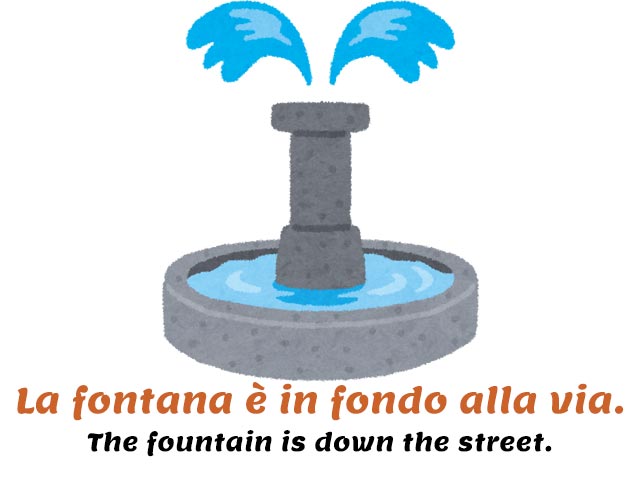
È means it is.
C’è means there is.
Another difference between essere and esserci in Italian is that the infinitive form esserci also translates English sentences beginning with “there must be” or “there should be”.
Deve esserci un motivo.
There must be a reason.
Dovrebbero esserci tre matite sulla scrivania, invece ce n’è solo una.
There should be three pencils on the desk, but there is only one.
And that’s the end of our lesson on the difference between essere and esserci in Italian!
What next?
Now that you’ve seen the difference between essere and esserci in Italian, you might want to keep learning Italian online with these free Italian resources:
❤️ If you liked this lesson on the difference between essere and esserci in Italian, consider sharing it with your social media friends who are also studying Italian.

